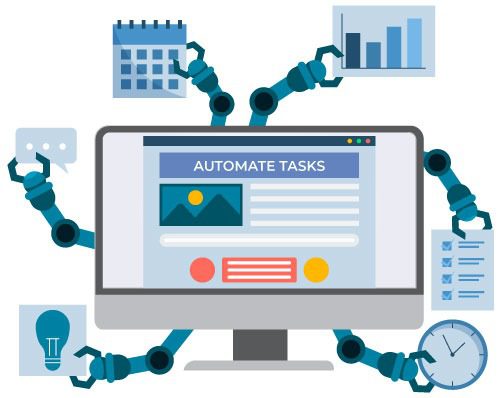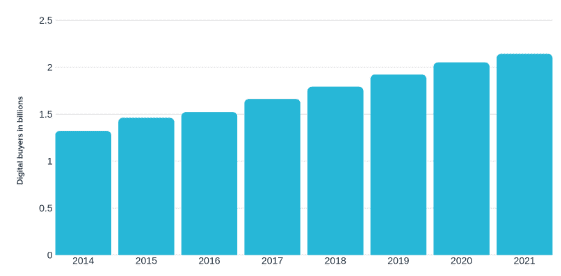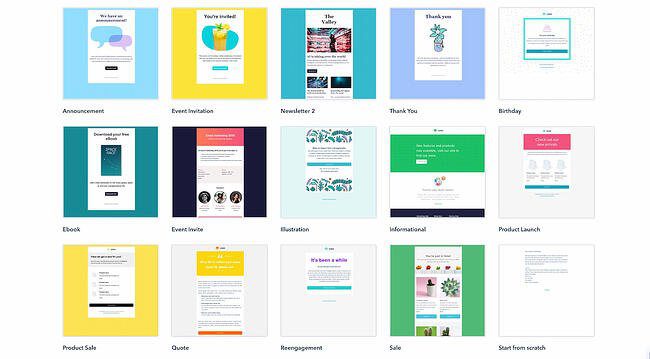Dropshipping is big business. Not only is the market set to be worth almost $558 billion by 2025, but 27% of online retailers are already using it. And it’s easy to see why. Dropshipping’s business model – which sends orders made through your online store straight to the supplier for fulfillment – means that you don’t have to purchase, store, or ship any of your own inventory. This saves you money on renting warehouse space, paying staff, and shipping costs, as well as the time and energy of picking and packing items yourself. Dropshipping is big business. Not only is the market set to be worth almost $558 billion by 2025, but 27% of online retailers are already using it.
In fact, research has shown that dropshipping can make you 50% more profit, compared to if you were holding your own stock inventory. So how do you cut yourself a sweet slice of that pie?
Start a dropshipping business, of course! Read on to find out how – in just five simple steps.
Find Your Niche
“Beginners should be focusing on choosing a long-term niche market with consistent demand and supplier availability, at a high enough price point, with competitive one to two day delivery times.”
- Lewis Smith, founder of Dropship Unlocked
Dropshipping is one of those rare business models where the how often comes before the what. So, while you might be certain that you want to start a dropshipping business, you still may not know what it is, exactly, that you’d like to start selling!
That’s why it’s so important that you get your niche right. While it’s tempting to jump on hot trends, this siren song is ultimately one peppered with fierce competition, small profit margins, and a lack of long-term viability.
In the long run, you’re better off opting for a niche with a sustainable demand, or where that existing demand is being filled by subpar companies or products. You’ll also want to pick inventory which there’s an ongoing need for, to win repeat customers.
Here are a few ways in which you can go about finding your dropshipping business’ niche:
- Take advantage of tools such as Google Trends, Kickstarter, and Trend Hunter to glean an understanding of what kind of terms, ideas, or products people are searching for
- Utilize platforms such as SEMrush or Google Keyword Planner to get a handle on the kind of key terms you want to be targeting
- Get to grips with which eCommerce markets – such as fashion, furniture, or electronics – are most profitable, by digging deep into the data on sites like Statista

Google Trends offers an insight into the steady rise of searches for ‘dropshipping’ over the last five years
And remember, finding your niche is a process of trial and error. You’ll need to experiment with a number of different products and ideas before settling on a niche that’s uniquely yours – so don’t be afraid to be bold!
“Don’t start with niche products to sell because you need to learn so much. The learning curve is huge. Go general, test many products, and do Facebook ads. Focus on that until you feel comfortable with the platforms, and until you feel like you know your stuff.”
- Mordechai Arba, founder of Ecomhunt.com
Pick a Supplier
Now you’ve carved out your niche and settled on which products you’re going to deliver, it’s time to partner with a supplier to make it happen.
This part of the process is crucial to the success of your business. While you’re responsible for your brand, one of the most stymying limitations of dropshipping is that you have little control over the product itself – not to mention the handling, shipping, and delivery processes, too!
It goes without saying, then, that if the success of your brand and business is going to depend on the quality of the supplier and product, it’s worth choosing your supplier wisely. Here are our top tips to help you do just that:
- Order a sample product to gauge its quality. Assess how long it takes to arrive with you, look for any sloppiness in the packaging or presentation, and test out the customer service by giving the supplier a call or sending them an email.
- Watch out for fraudulent dropshipping suppliers. If a supplier ever asks you for an ongoing “service” fee – rather than simply making money by providing the product – it’s not a good sign. Likewise, walk away from any supplier offering super high margins – particularly ones that sound too good to be true.
- Do your due diligence. A lot of suppliers may not have plunged much money, time, or effort into their websites, so don’t be dissuaded if their online presences look a little dated. Do some digging, and always judge a provider by the quality of its goods and services, rather than the quality of its website!
When you’ve picked a supplier, you can either reach out to it directly or use a plugin like Oberlo to import a company’s wares straight into your online store.
Alternatively, you can pay for a supplier directory, or go to a trade show to connect with relevant suppliers. If all this fails – and you’re still struggling to find the right supplier – you can try ordering from a competitor, whom you suspect is also dropshipping.
When the bill arrives, all you have to do is trace the return address and bingo – there’s your supplier! It’s a neat, deliciously Machiavellian hack, that can help you hone in on a reliable, reputable supplier for your new dropshipping enterprise.
Sort Out the Legal Stuff
Niche? Check. Supplier? Check. Now you’ve got the ‘what’ and ‘who’ parts of your burgeoning dropshipping business downpat, it’s time to figure out the ‘how’ – that is, unwrapping the red tape, and getting to grips with all the legal stuff you need to know about.
Firstly, you’ll need to choose a business structure. This is a legal classification, which helps Uncle Sam understand how to broadly categorize your business. Three of the most common structures here are:
- Sole proprietorship: less paperwork and tax considerations, but no liability protection – which puts your assets at risk!
- Limited Liability Company (LLC): registers your dropshipping business as legally separate from you as an individual – one of the most common structures for US enterprises.
- C Corporation: offers the most liability protection – but with the higher price point to match!
Next, you’ll need to set up a business bank account, and apply for an EIN (Employment Identification Number). You’ll need an EIN to work with most dropshipping suppliers, and – of course – pay your business’ taxes. You can apply for an EIN via the IRS’ website.
Finally, you’ll want to register your brand-new dropshipping company’s name with the relevant authorities. This helps prevent rival businesses from attempting to cut a slice of your success by copying your brand name and site and pilfering your sales.
Choose Your Sales Channel
So, you’ve got your suppliers lined up, your business legally defined, and you’re itching to start selling. But, ah…where, exactly?
It’s time to pick your sales channel, and, broadly speaking, you can go one of two ways here.
Option 1: Sell through your website
If you pick this option, you’ll need a website, first! For this, you can either hire a web developer (expensive, little effort involved), or take a DIY approach and build it yourself, using a tool such as BigCommerce, WordPress, or Shopify.
Once your website’s set up and looking fabulous, you can start selling through it.
Benefits of selling through your own website:
- More creative control over how your stock is displayed online, as well as all your branding and site layout
- Zero selling fees!
- Lower monthly fees when compared to selling through an online marketplace – and you’re not at the mercy of their policies!
Option 2: Sell through an online marketplace
Alternatively, you can opt to purvey your wares through an online marketplace, such as Amazon or Etsy. This route is more well-suited to hobby selling – as opposed to setting up a store for long-term dropshipping success – but does still have a number of advantages.
Benefits of selling through an online marketplace:
- The traffic is already there for you to tap into (which means a huge wealth of ready-made customers!)
- Super easy to set up
- Minimal effort to maintain
“Personally, I recommend for those starting their dropshipping business to build a basic website on Shopify as best you can (without worrying about every detail), and get traffic running there. This will be where you learn the most because you can always improve your site easily over time.”
- Ricky Hayes, dropshipping expert, and co-founder of the ‘Debutify’ Shopify theme
Market Your Business and Products
You’re almost there! From figuring out what you’re selling, finding someone to provide the goods, and settling on a place to sell them, you’re nearly a fully-fledged dropshipping business. All you have to do now is shout about it!
That means you need a strategy for marketing your business that incorporates three major channels: SEO, social media, and paid marketing.
SEO (search engine optimization)
Sitting somewhere between an art and a science, SEO is the process of setting your site up for success in Google’s SERPs (search engine results pages). While there’s no set-in-stone formula for SEO success, a few tried-and-tested strategies include:
- Focusing on your content. Publishing high-quality content that’s relevant to your readers – and doing it regularly – is a fantastic way of telling search engines what you do, and why you should be trusted.
- Making your site easy to navigate. Users love a site that’s easy on the eye and easy to get around – so it’s no surprise that Google does, too!
- Speeding things up. By compressing images and reducing the number of files and visual clutter on a page, your site will load faster, and prevent potential buyers from ‘bouncing’ back to the SERPs in frustration.
- Ensuring your site is mobile-friendly. More people than ever are using their smart devices to browse the web for products and services. The better your business’ wares display on a small screen, the more chance you’ll have to transfigure those on-the-go onlookers into converting customers.
And, if you get stuck, there are several leading free SEO tools you can use to improve your dropshipping store’s online rankings.
Social media
Facebook, Instagram, Twitter, LinkedIn… with so many channels to choose from, how do you know where to market your dropshipping business?
The answer is that it’s different for everyone. That’s not a cop-out – it just means that which social media platforms you advertise on is inextricably linked to what you’re selling. You might have a hard time hawking bikinis on LinkedIn, for example, while an office supplies vendor might struggle to make a splash on the hip, visually-oriented interfaces of Instagram.
Done right, though, social media is an immensely valuable instrument for any dropshipping business. It can help you engage with your customers and build an online community around your brand, as well as drive traffic to your blog in droves.
SEM (search engine marketing)
Though it should never be used as a substitute for SEO and brand-building, SEM campaigns – if done correctly – can be a worthwhile (if expensive) endeavor to send clicks and conversions your way.
Essentially, this form of marketing involves paying Google to put your business at the top of the search results, in the form of a sponsored ad. This is excellent for sending primed, ready-to-buy customers to your site, but there’s a caveat – you’ll pay for every click that comes through from that ad!
For this reason, we don’t recommend it to businesses just starting out in the dropshipping world. Nor, for that matter, does dropshipping pro Ricky Hayes:
“Beginners should focus on education as their top priority, and not fall into the trap that Facebook Ads is the only marketing platform. Every new dropshipper should learn about Google, Bing, and YouTube, which are areas of great opportunity.”
Take it from us, and from the experts – focusing on your business’ brand, content, and SEO strategies is always the best (if not the quickest) route to scaling your business. You may want to learn about selling a business long before or if you do want to sell your business later. Knowing this now will prepare you for seeing the value your business provides
The Five Steps to Starting a Dropshipping Business
Let’s quickly recap the five key things to remember when growing your dropshipping business from scratch:

Really, the only thing left to do now is… start selling!
Good luck from us, and enjoy the ride!

Rob Binns
Rob Binns is the Content Manager for Website Builder Expert. When he’s not reading, writing, and editing, he can be found curled up in a sunny spot, or watching football in the company of close friends and cold beers.







